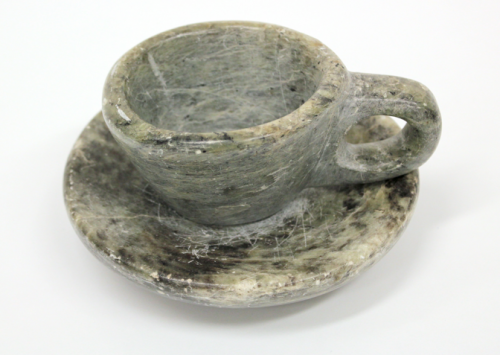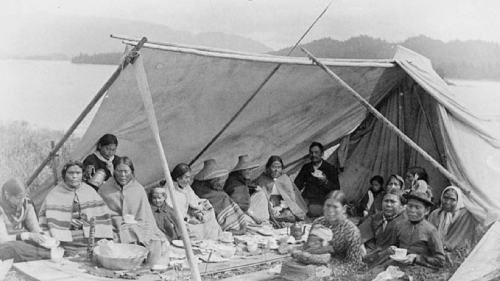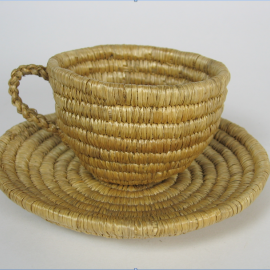By Maddie Knickerbocker and Lisa Truong
Homi Bhabha’s explanation of colonial mimicry forms part of what is arguably one of his most well-known essays, "Of Mimicry and Man: The Ambivalence of Colonial Discourse."
"…Colonial mimicry is the desire for a reformed, recognizable Other, as a subject of difference that is almost the same, but not quite. Which is to say, that the discourse of mimicry is constructed around an ambivalence; in order to be effective, mimicry must continually produce its slippage, its excess, its difference" (Bhabha 2008: 126).
Though he predominantly focuses on colonial enunciations that discursively represent a mimetic version of the colonized, Bhabha also shows how mimicry can work in the opposite direction as well, so that colonized peoples’ mimicry of the colonizer simultaneously reflects and disrupts colonial authority (2008: 126). He adapts his phrase “almost the same, but not quite” later in the essay, transforming it to “almost the same, but not white.” (p. 128).
This twinned refrain immediately came to my mind months ago, when I first sat down to write about the objects that are the focus of this month’s “Appropriation (?)” essay. As Bhabha shows us is the case for colonial mimicry, these objects demonstrate that appropriation goes both ways, too.

The artifacts in question are teacups, created by Indigenous artists from bark and grass or carved from stone. The teacups, often accompanied by matching saucers, remain formally recognizable, evoking European, especially British, civility and refinement, but are materially and technically distinct. In a certain light, their rendering by Indigenous artists from local materials has transformed them from something familiar to something exotic, foreign, and fundamentally “Other.” Is this an appropriation? If so, what is being appropriated here, exactly? Or does it, rather, represent the Indigenization of an everyday object, a process bound to occur in the colonial contact zone? These are questions that my colleague Lisa Truong and I debated earlier this spring, as we worked through our initial ideas about Indigenous teacups.
This essay is partly the story of these teacups, and also partly an exploration of how our thinking on them has changed as we moved forward with our ongoing research.
Lisa and I met at the University of Toronto’s Master of Museum Studies program in 2009. That year, I did an internship at the Museum of Vancouver, and during that time I came across four woven teacups (photo at top). They charmed me, representing as they do the intersection of early 20th-century notions about femininity, domesticity, and civility. The following year, Lisa co-curated an exhibit called Sanaugaq: Things Made by Hand at the University of Toronto Art Center, which focused on the emergence of the Inuit art market after the 1950s. One of the objects included in her show was a teacup carved in Pangnirtung, Nunavut, in 1967 by Josephee Kakee (photo above).
However, it wasn’t until we were at a conference together in 2011 that we discovered we had both encountered these enigmatic teacups. Impressed by the similarity of these in fact very different teacups, Lisa and I began researching them together. Since then, we have unearthed many more examples: we now know of one other carved teacup which is for sale in the Museum of Inuit Art gift shop in Toronto, two woven tea services recently sold through the Spirit Wrestler Gallery in Vancouver, and an astonishing 37 woven teacups in different Canadian, American, and British museum collections. Given the relatively low cost of acquiring basketry woven items in the early to mid-20th century, we anticipate there many others like these that we just haven’t found yet.
While writing up some of our initial research on Indigenous teacups, Lisa and I found Bhabha’s articulation of colonial mimicry very helpful. Certainly his emphasis on the agency of people fighting colonialism, even as they represented some of its forms, was compelling. However, our analysis of the historical record also shows the integration of teacups into Indigenous cultures throughout the 19th century. Since many Indigenous communities prior to contact already used local plants for tea, and had significant emphasis on taking tea both as a social ritual and for medicine, Indigenous peoples rapidly incorporated the European teacup (which originates in China) and British tea (cultivated in India) into their everyday lives.

There is significant archaeological and historical evidence to support these claims. For example, the high number of ceramic teaware shards that have been found at archaeological sites across Canada indicate that Indigenous people began to use ceramic tea vessels very soon after they were available through trade (Cabak and Loring 2004). Additionally, teacups and saucers were incorporated into mortuary practices in Alaska, and by the 1880s, replaced Indigenous artifacts (Jackson 1991).During the same time period, the Heiltsuk of British Columbia incorporated ceramics, particularly cups and saucers into their potlatches, thus showing that tea and teacups had become fully integrated into Heiltsuk social lives (Marshall and Maas 1997). Photographic evidence such as an image from Port Simpson (Lax Kw’alaams), British Columbia, demonstrates the familiarity that Tsmishian people had with not only teacups, but also the idea of a tea party, as early as 1890 (photo above).
This long history of Indigenous peoples’ use of teacups throughout the 19th century would have rendered the porcelain teacup part of their everyday lives by the time the woven and carved teacups were made during the early to mid-20th century. Historicizing the inclusion of porcelain teacups into Indigenous material culture caused us to rethink our earlier assumptions. Specifically, we started to question whether it was possible instead to conceive of these items not as “mere” Indigenous copies of an “authentic” British original (as objects of colonial mimicry), but rather as themselves inherently Indigenous. After all, porcelain teacups are now considered quintessentially British despite having been imported there from China. Surely, by that logic, woven and carved teacups can be understood to be Indigenous in their own right?
Lisa and I recently presented the above research at a conference co-organized by the British Museum and University College London, called “The In-Betweenness of Things: Materializing Mediation and Movement Between Worlds.” While recognizing that these objects are hybrid, in that they certainly demonstrate a crossing of cultural boundaries, we also argue that emphasizing their Indigeneity is critical, because it makes a larger political and historiographical point. As historians and anthropologists in Canada have recently argued, though colonialism affected Indigenous lives and material culture, it did not and does not define Indigenous people. The “in-betweenness” of these teacups means we cannot come to understand them through consistent reproduction of divisions between colonizer and colonized. Their paradoxical nature—at once familiar and foreign to the collector, but fully Indigenous to their creators—requires us to complexify our understandings of material culture in the context of colonialism.
And as for “appropriation?” While writing the conference presentation, Lisa and I carefully used other verbs: “integration,” “inclusion,” “Indigenization.” What we were attempting to avoid with this word choice was the negative nuance that “appropriation” has, an inflection to the word that has soured even further due to the recent strength of anti-appropriation blogs, social media, and advertising critiques. Much has been said about this negative form of appropriation by IPinCH members in this same forum.
In the case of the woven and carved teacups, maybe we can sense a different kind of appropriation, one that works against colonialism instead of for it, one that runs alongside but apart, one that has a different nuance because the balance of power is reversed. One that is almost the same, but not quite.
Photos: Western Inuit teacup, unknown artist, woven from seagrass, Museum of Vancouver collection, photograph by Maddie Knickerbocker; Josephee Kakee teacup and saucer, carved 1967, Collection of Carmen Victor, photograph by Lisa Truong; Tsimshian Tea Party, 1890, photograph by Robert Redford in Fort Simpson, Album 5, Library and Archives Canada (via Wikipedia, public domain).
References Cited
Bhabha, Homi. 2008. The Location of Culture. Routledge Classics, New York and London.
Cabak, Melanie and Stephen Loring. 2000. “A Set of Very Fair Cups and Saucers”: Stamped Ceramics as an Example of Inuit Incorporation.” International Journal of Historical Archaeology 4(1):1-34.
Clifford, James. 1998. The Predicament of Culture: Twentieth-Century Ethnography, Literature, and Art. Harvard University Press, Cambridge.
Henare, Amira, Martin Holbraad, and Sari Wastell. 2006. Thinking Through Things: Theorizing Artefacts Ethnographically. Routledge, New York.
Jackson, Louise M. 1991. Nineteenth-Century British Ceramics: A Key to Cultural Dynamics in Southwestern Alaska.” PhD dissertation, Department of Anthropology, University of California Los Angeles.
Jolliffe, Lee. 2007. Tea and Travel: Transforming the Material Culture of Tea. In Tea and Tourism: Tourists, Traditions and Transformations, edited by Lee Jolliffe. Channel View, Toronto.
Marshall, Yvonne, and Alexandra Maas. 1997. Dashing Dishes. World Archaeology 28(2): 275-290.
Phillips, Ruth. 1998. Trading Identities: The Souvenir in Native North American Art from the Northeast, 1700-1900. University of Washington Press, Seattle.
Pratt, Mary Louise. 2008. Imperial Eyes: Travel Writing and Transculturation, 2nd ed. Routledge, London and New York.
Staniforth, Mark. 1996. Tracing Artefact Trajectories—Following Chinese Export Porcelain. Bulletin of the Australian Institute for Maritime Archaeology 20(1).
The Appropriation (?) of the Month feature, written by IPinCH team members, highlights examples of uses of intellectual property that might be considered appropriations.







Comments
Surrealist Appropriations